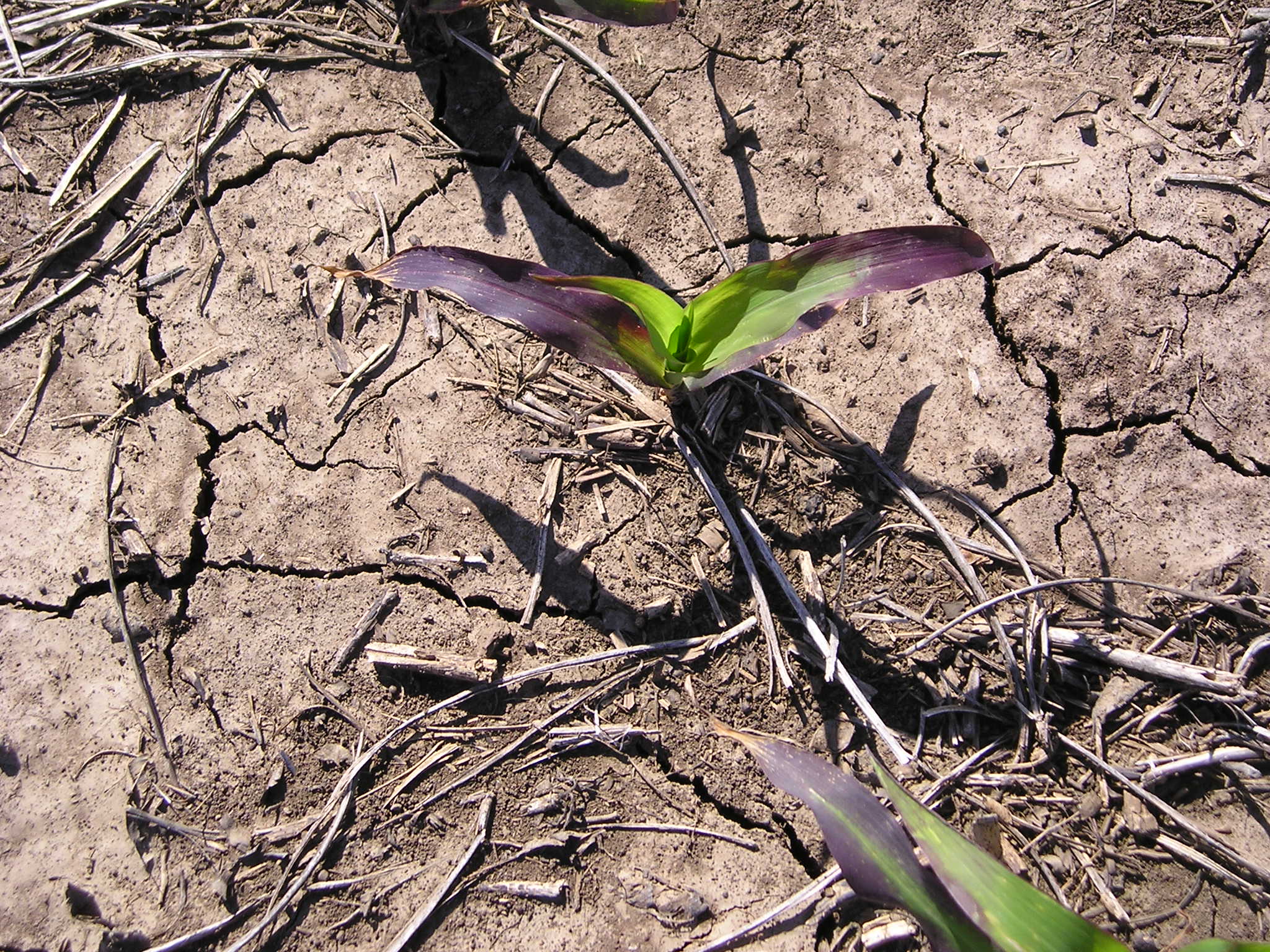Purple or magenta coloured corn leaves in the early spring can be the result of weather conditions, inhibited root
growth, phosphorus (P) deficiency, or herbicide injury that results in a build-up of magenta-tinted pigments
called anthocyanins. The production of the anthocyanins is determined by the genetic makeup of the corn product,
as not all corn products can produce them. The expression of the magenta colouration is not limited to the leaves
and can be exhibited it in the silks and anthers.
The corn looked normal when it emerged, why did turn purplish at V3?
Stress factors that restrict root growth such as compaction, wet and cool conditions, P deficiency, or herbicide
injury may result in the accumulation of anthocyanin pigments because the plant cannot utilize all of the
photosynthates that it produces. Weather conditions during V3 through V6 growth stages may also be the cause of
the accumulation. Sunny days with cool nights (4 to 10° C) allow the plant to build up photosynthates
to a level that cannot be completely utilized at night because of the cool temperatures.
 Figure 1. Purple corn leaves due to weather conditions.
Figure 1. Purple corn leaves due to weather conditions.
How long will the colouration last?
If the cause of the colouration is a result of sunny days and cool nights, then as nighttime temperatures warm and
corn enters the rapid-growth stages after V6, the color should fade. If the cause is another stress, then the
coloration colouration will most likely last longer than the V6 growth stage.
Will the magenta coloration impact yield potential?
Depends. If the colouration is the result of the inhibition of the roots, P deficiency, or herbicide injury it may
reduce yield potential. A watch-out for corn following canola, as the functional mycorrhizae following canola is
not available to the following corn crop. It may take up to 50 days for the mycorrhizae to recolonize the corn, to
help provide the necessary P. Banding of a starter fertilizer containing P is recommended.2 However, if
the colouration is the result of the temporary weather conditions that occurred during V3 to V6 growth stages,
then yield potential should not be impacted and the coloration was only cosmetic. It is important to understand
that the coloration does not impact yield potential, but the cause of the coloration that may be yield limiting.
Could the underlying cause be something else?
Under cool and wet conditions, a chloroacetamide pre-emergent herbicide, if applied, can move into the root zone
and the plant can take up more chemical resulting in a purpling. With the return of more normal warmer weather,
the symptoms should disappear.
Could real P deficiency be the cause?
Plants that are P-deficient typically exhibit symptoms only on young plants. Older corn plants that are
P-deficient will be dark green with reddish purple leaf tips and leaf margins on older leaves. Newly-emerged
leaves will not exhibit the purplish coloration. The plants will be stunted and grow more slowly than plants with
adequate P.
What are the field symptoms that can help determine the cause of the magenta colouration?
If the colouration is related to corn product genetics, then the symptoms should be more uniform across the field.
While other causes may be more uniform across the field, they are usually more variable as fields are typically
variable in soil types, elevations, and drainage.
Sources
Nielsen,R. 2017. Prevalent purple plants perennially puzzle producers. Purdue University Extension. https://www.agry.purdue.edu/ext/corn/news/timeless/PurpleCorn.html
2 Heard, J. Corn of many colours Manitoba Agriculture. https://www.gov.mb.ca/agriculture/crops/seasonal-reports/
Legal Statements
ALWAYS READ AND FOLLOW PESTICIDE LABEL DIRECTIONS. Performance may vary from location to
location and from year to year, as local growing, soil and weather conditions may vary. Growers should evaluate
data from multiple locations and years whenever possible and should consider the impacts of these conditions on
the grower’s fields.
Bayer, Bayer Cross are registered trademarks of Bayer Group. Used under license. ©2021 Bayer Group. All rights
reserved. 1017_Q1_CA